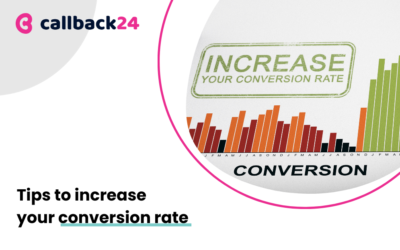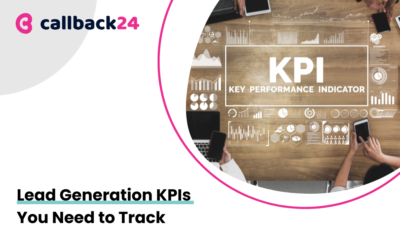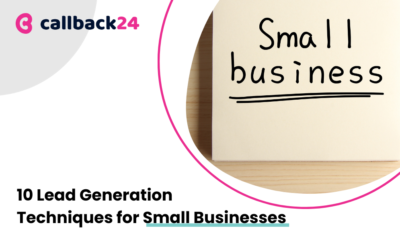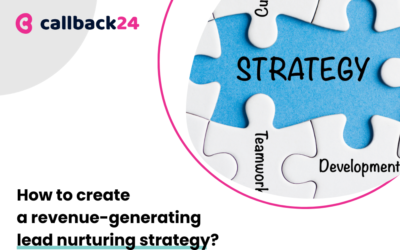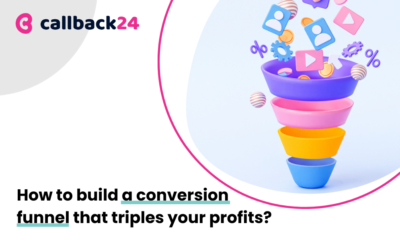Pop-ups have become a must-have for most websites. Marketers love them and users hate them. But is it really true?!
Sumo users collected 23,645,948 email addresses using List Builder popups in less than two years. Pop-ups can be disturbing, annoying, intrusive, but they work. They are effective!
If used wisely.
Later in the article I will tell you how to prepare pop-up windows so that their use does not repel the audience?
Pop-ups are just tools. See how to optimize them so that they encourage and not reject potential customers.
- What is the pop-up function?
- What types of pop-ups are there?
- Why don’t users like popups?
- How to create pop-ups? Some important rules.
- 1. Internet users do not see pop-ups.
- 2. Poorly prepared pop-ups can reduce SEO value.
- 3. Warning, this pop-up cannot be closed!
- 4. Deferred loading time of the pop-up.
- 5. Pop-up is intended to inform, not cover up.
- 6. Give something from yourself!
- 7. Be visually original.
- 8. Use the unusual layout.
- 9. Be consistent.
- 10. Take care of the technical issues.
- Pop-up and User Experience rules
- How to measure the effectiveness of pop-ups?
- Callback24 – pop-up generating leads.
- Summary
What is the pop-up function?

A pop-up is a window with content that usually appears on the home page. Its main goals are:
Information purposes
- a request to approve the Privacy Policy and GDPR,
- a request to accept Cookies,
- confirmation of the user’s age,
- posting important information / changes regarding the work of the organization.
Marketing goals
- broadly defined lead generation, i.e. subscribing to the newsletter and obtaining e-mail addresses, contact form,
- acquiring abandoned shopping carts / visits, i.e. encouraging them to return to the website via an exit pop-up,
- loyalty actions increasing the conversion rate, e.g. a discount on the first purchase or a coupon for a free valuation. There can also be a free audit, presentation of a promotional campaign, information about new products and services,
- as a call-to-action – encouraging to go to a subpage or to an external tab.
Communication goals
- messenger window or other chat type communicator,
- callback window, i.e. a handset that allows you to call back the customer,
- a survey that allows you to collect information from a potential recipient.
What types of pop-ups are there?
Pop-ups can be divided into several types due to their structure.
- Overlays – pop-ups located in the middle of the screen.

- Full screen – pop-up – i.e. pop-up windows that darken the entire page. The user has to close the pop-up to see the content of the website.
- Exit pop-up – encourages you to stay on the website. It appears every time the user wants to leave the website.

- Slide in boxes – are a good solution if you don’t want to be too pushy with your advertisement. This box will be shown to users after some time on the side of the page.
- Push notifications – short text messages that the recipients must agree to. After giving his consent, the user will be informed about the new offer or about the content update. These are pop-ups that have a very high conversion rate.
Which popup is the most effective?
Here a classic – “it depends”.
When using pop-ups, we must remember that they are part of wider marketing activities.
Just as promotional activities are tailored to your website, pop-ups must also be relevant to the campaign. Both the colors and the content, the required fields should be consistent with the guidelines for marketing campaigns.
Why don’t users like popups?
Imagine you are very hungry. You come back cold from the store and on the way you decide to order a pizza. You click the website of your favorite pizzeria on the mobile version and wait for it to load.
But instead of a tasty pizza, you see a pop-up informing about the Privacy Policy and cookies. You unclick.
Next, you see a pop-up informing about the new place and the new shipping cost.
You close, you go to the menu. And there a pop-up encouraging you to subscribe to the newsletter.
When you finally know what you would like to order, you go to the contact and there are more ads obscuring the address.

How are you :)?
This is a great way to illustrate how too many pop-ups can effectively discourage some users.
Remember! Pop-ups themselves aren’t bad. You just need to be able to correctly apply them.
How to create pop-ups? Some important rules.

Just ‘uploading’ pop-ups to a given website is not difficult. Almost every popular e-commerce platform, popular CMSs have modules that allow you to embed a popup on your website. This step doesn’t even require the help of a developer.
The challenge is to design pop-ups that will attract, not reject, encourage and not repel
1. Internet users do not see pop-ups.
We are used to pop-ups, very often we close them mechanically, without looking at their content. If we want to put a pop-up on a website or in an online store, we need to have an idea for it.
2. Poorly prepared pop-ups can reduce SEO value.
If we care about high positions in search engines, we should approach the topic of the pop-up carefully. The pop-up itself, i.e. the content and links it contains, do not affect the positioning of the page on Google. However, inadequate display on mobile devices, long page loading times, obscuring the entire content of the website may contribute to a drop in the Google search engine positions (Source: Blog Centrum Google dla webmasterów).
3. Warning, this pop-up cannot be closed!
There is nothing more annoying than a pop-up that the user cannot close with a popular “cross”. This may seem like a great idea to us. However, not only will we lose in the “eyes of Google”, we will also lose users
4. Deferred loading time of the pop-up.
Google has given a few rules that we must follow. One of them is displaying the window to the user only after a few or several seconds after loading the website.
5. Pop-up is intended to inform, not cover up.
Pop-ups are not intended to obscure the content on our website. The button enabling its closing should be clearly visible.
6. Give something from yourself!
Encourage the user to leave their data by offering them something from yoursel. Discount on the first purchase, service voucher, free e-book. All this will make it easier to obtain data.
7. Be visually original.
Pop-ups should catch the eye and stand out from the crowd of similar ones. Such a solution can be an interesting photo, an unusual arrangement of elements, an original call-to-action. Any such bonus will encourage the customer to leave data and browse the site.
8. Use the unusual layout.
The lower right section of the screen is very often overlooked by marketers, which is a mistake. It is a place that has not yet “alienated” users, so its effectiveness may be greater. In Google Analytics you can see what screen resolution the audience of your website is using. This way you will know if they use high resolutions (over 1600px wide) and if you can apply this type of window or not.
9. Be consistent.
It is not said that the same pop-ups are to appear on the home page and on subpages. Each pop-up can be different. One will inform that the address has changed and the other will propose a free audit. Yet another will encourage you to leave your contact details. However, all of them must be consistent so that there is some order on the website.
10. Take care of the technical issues.
Once you have your pop-up ready, take a technical look at it. Check whether it is not slowing down the page, whether it is not obstructing the main content, and whether it displays well on smartphones. When it comes to the mobile version, here it is worth considering whether to post a pop-up on the mobile version at all. It is worth connecting Google Analytics and checking the bounce rate (Source).
Pop-up and User Experience rules
Before you put a pop-up on your website, it’s worth considering its impact on UX.
UX, or User Experience, is a user experience about your website.
How to design a pop-up to comply with UX principles?
a) the user should have a choice – do not be intrusive and do not force them to see the advertisement. In other words, the user may be able to opt out of viewing a pop-up on the website at any time.
b) avoid autoplay ads – similarly to the above, remember that the recipient has a choice. Make sure that the movies do not start automatically without user interference. And if you turn it on automatically, with the sound muted. Imagine the irritation of the user if he suddenly hears a loud movie or advertisement while on the site.
do not display too many advertisements – in marketing, less is often more. Don’t install multiple pop-ups on the website; make sure that the windows that are displayed have legible content.
User Experience is not a fashion, it is a set of rules influencing the creation of websites and online stores. Before any pop-up is published, check if it complies with UX rules.
How to measure the effectiveness of pop-ups?
The best pop-ups posted on a website have an efficiency of 9.28%. Of course, push notifications are the most effective, because they are new, unusual and not yet boring.
To check if the pop-up is effective, it is worth doing A / B testing. From these, you can tell which layout and which content is converting.
It is worth implementing Google Analytics on the website, which will indicate customer shopping paths and show which page elements turned out to be the most effective.
Callback24 – pop-up generating leads.

There are types of windows that allow you to obtain new leads in an efficient and quick way. An example of such a pop-up is Callback24. It is a tool that acquires up to 30% more connections from the website.
How is it working?
We install the handset widget on the website. After clicking on this widget, and additionally after a certain period of time, a pop-up appears, encouraging the user to enter a phone number. Once the customer has provided his number, the seller can call him back.
In the tool panel, the seller will see the customer’s phone number and the information from which website he came. After a month of using the free package, he will know which websites generate the most inquiries. This will allow you to answer the question of how many customers the pop-up generating leads has acquired.
Summary
Pop-ups are still great tools for generating leads.
If you are planning a sales website, landing page or online store – the Callback24 widget will allow you to attract up to 400 customers in the first month.
Remember!
Your ads direct customers to your website. In the next step, your goal is to turn your users into potential customers!
On a daily basis I am responsible for the development and marketing of the product, I care for relations with clients and partners.




